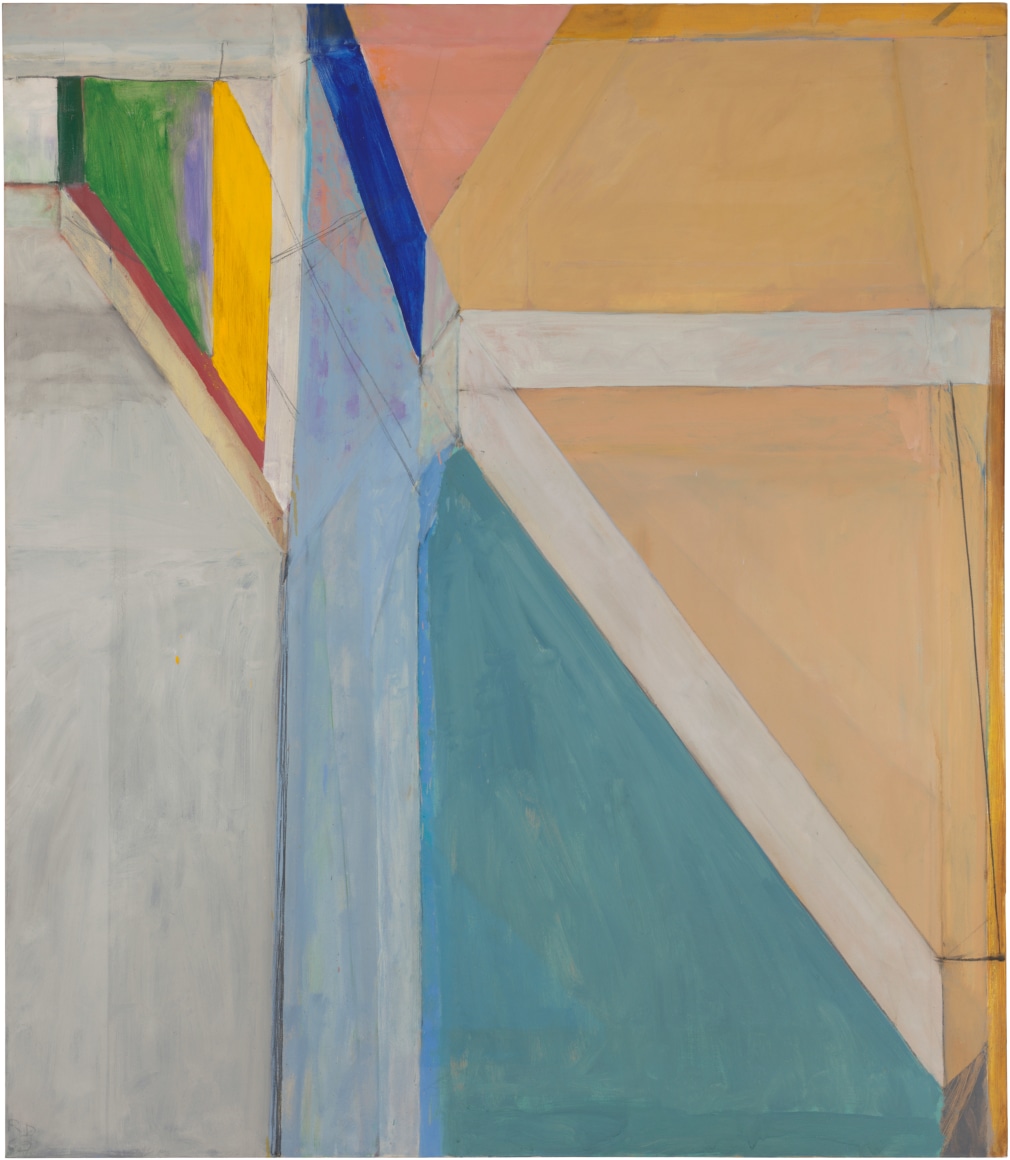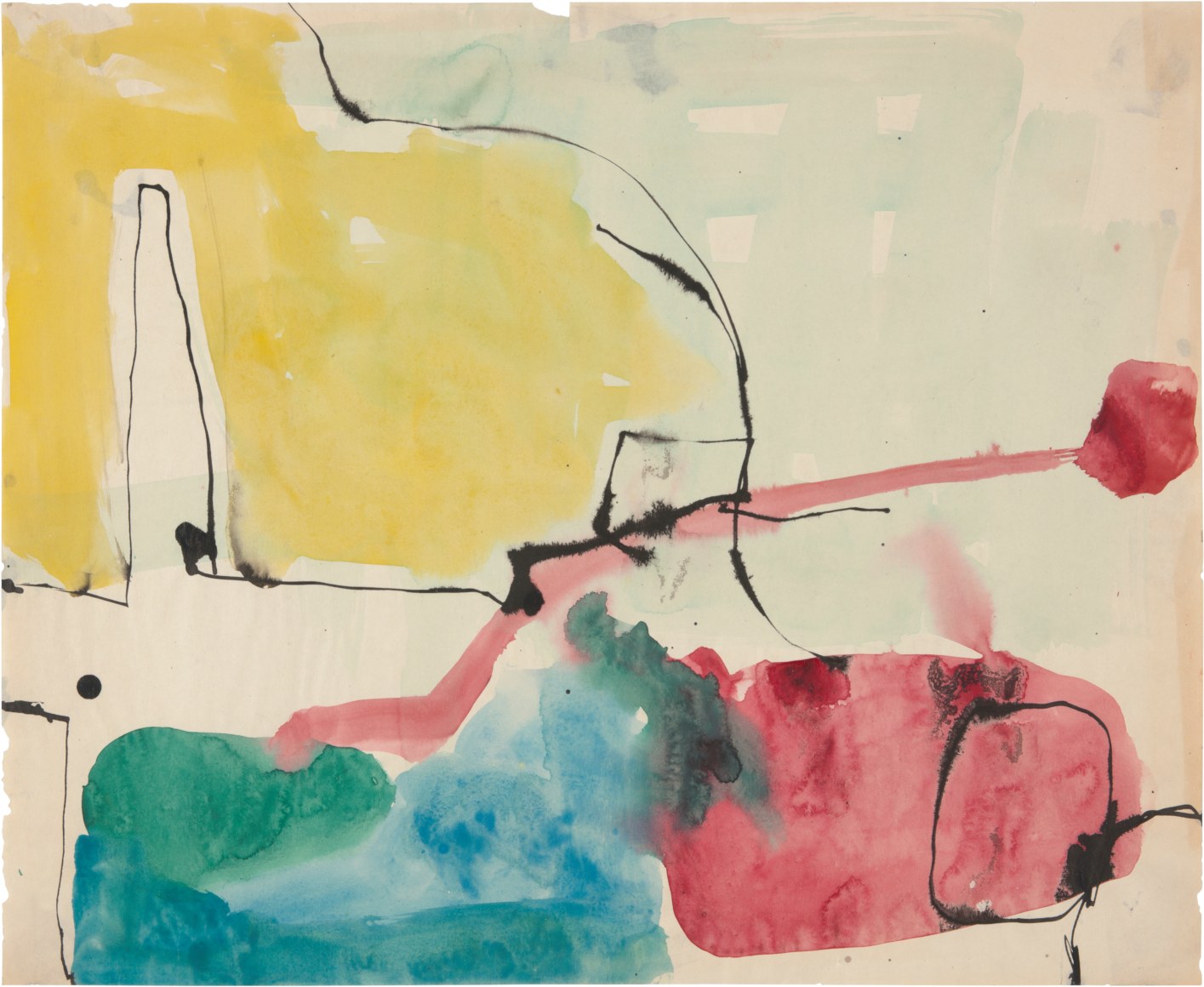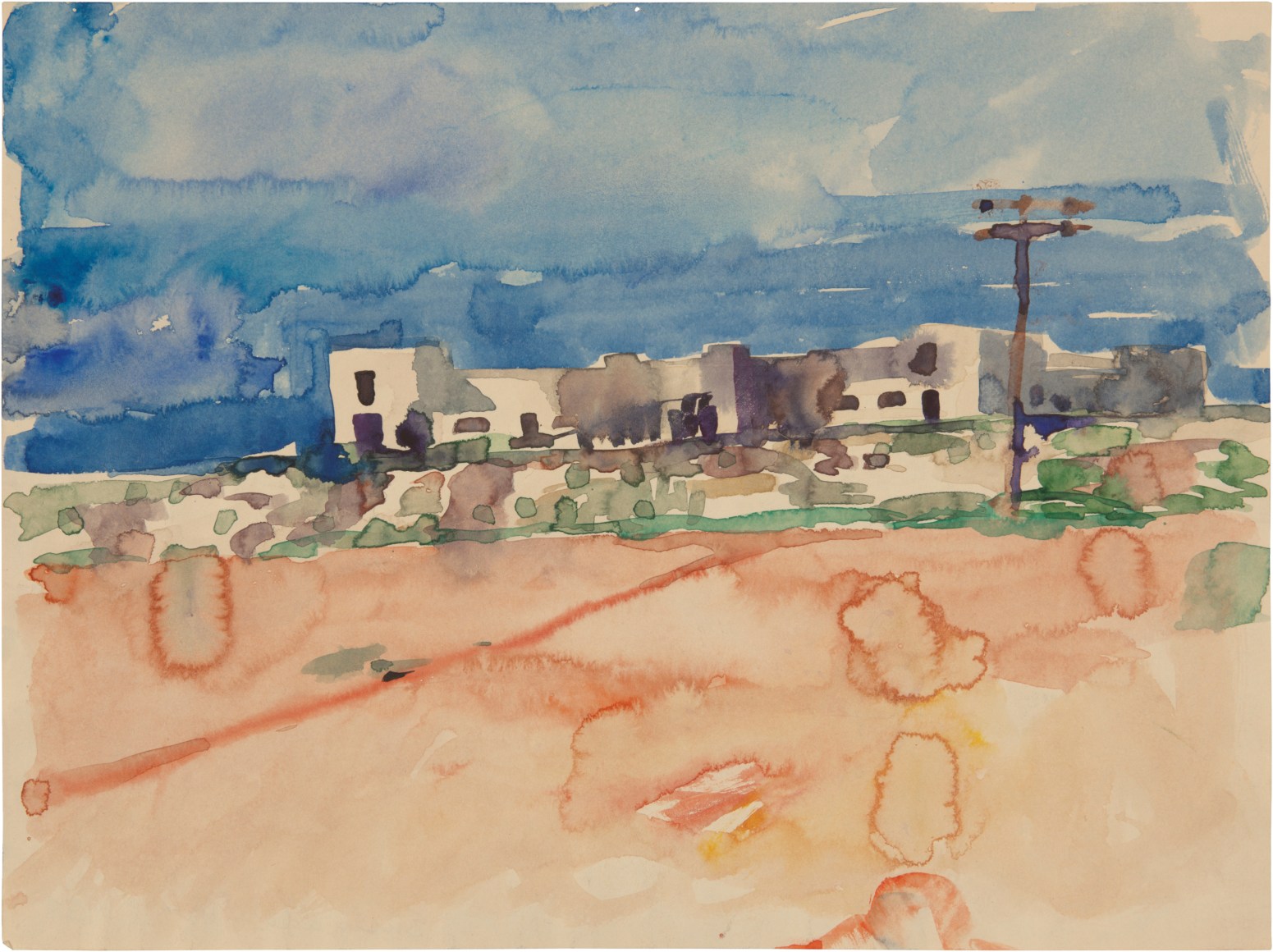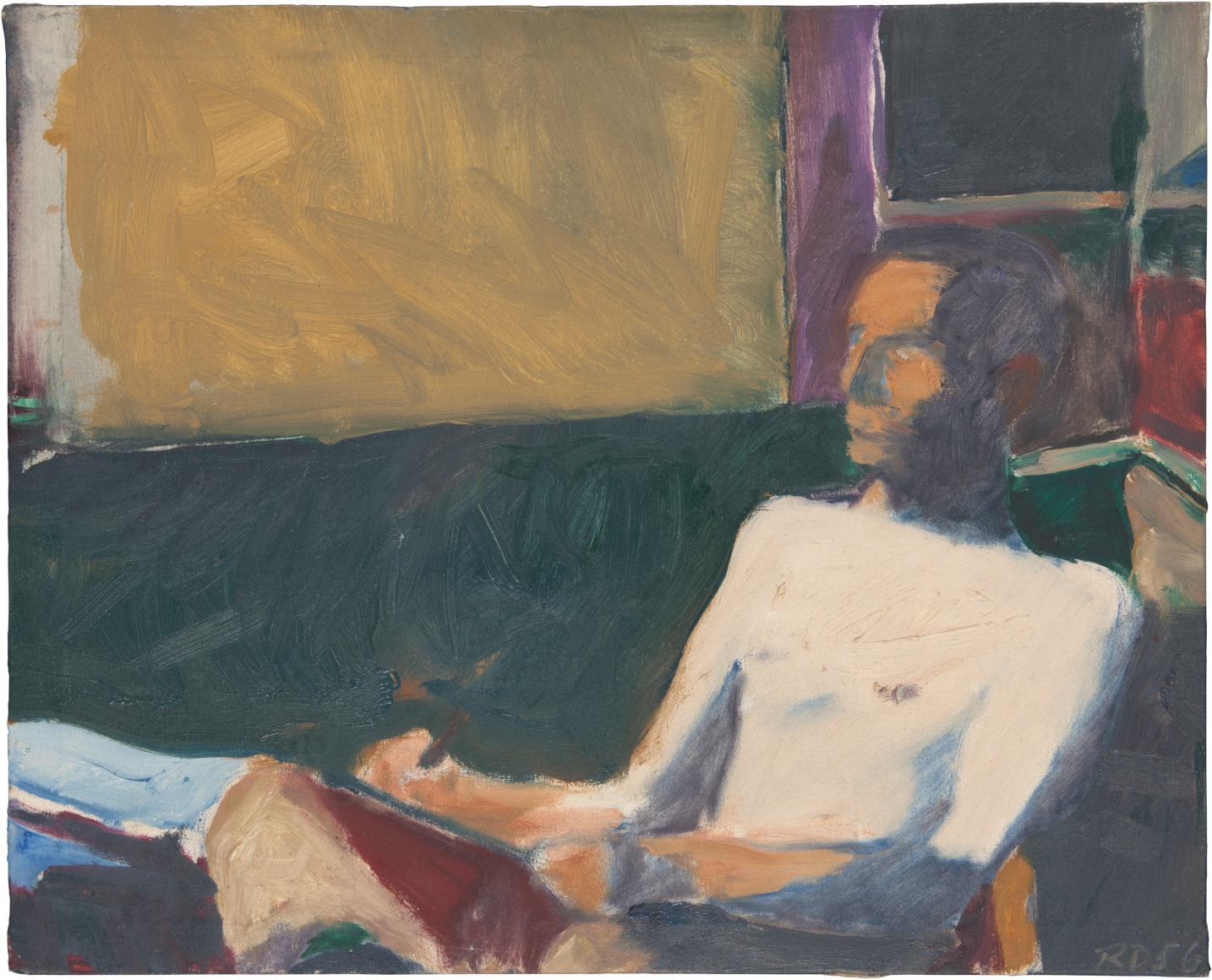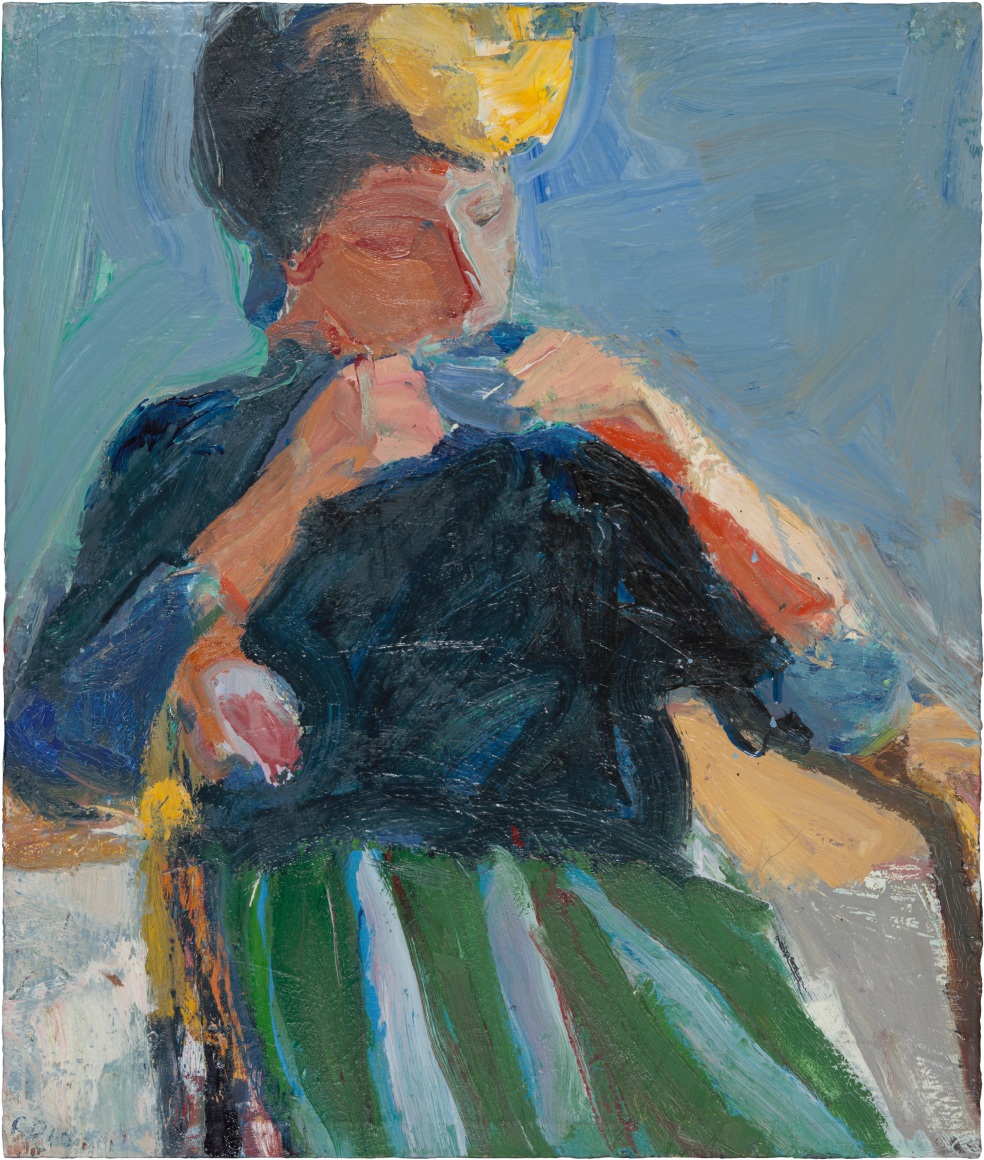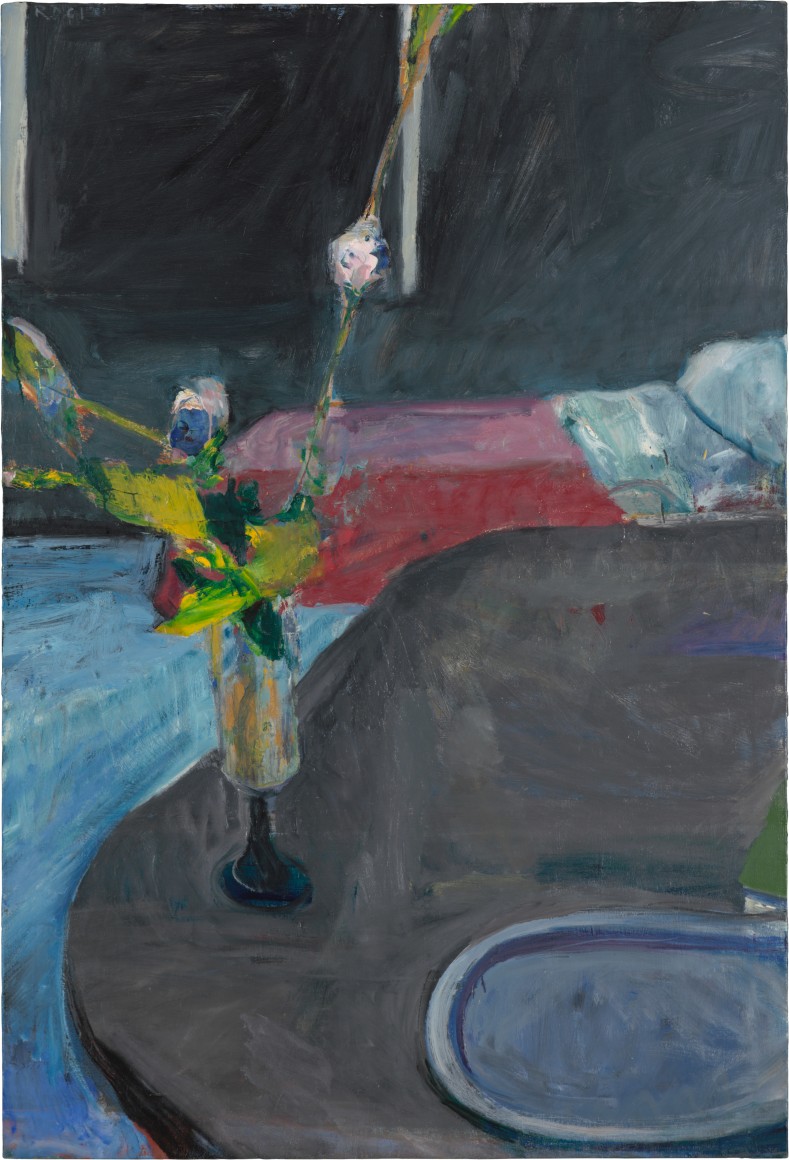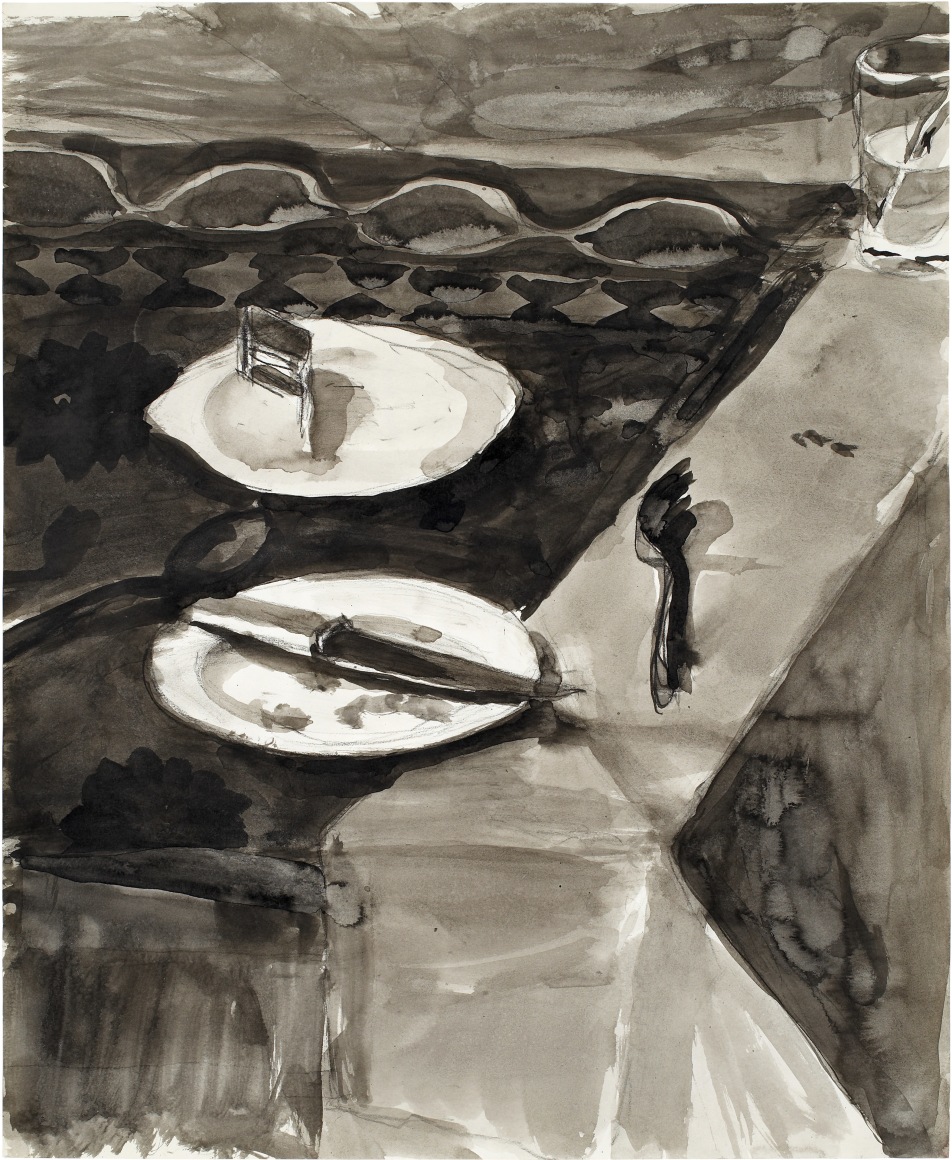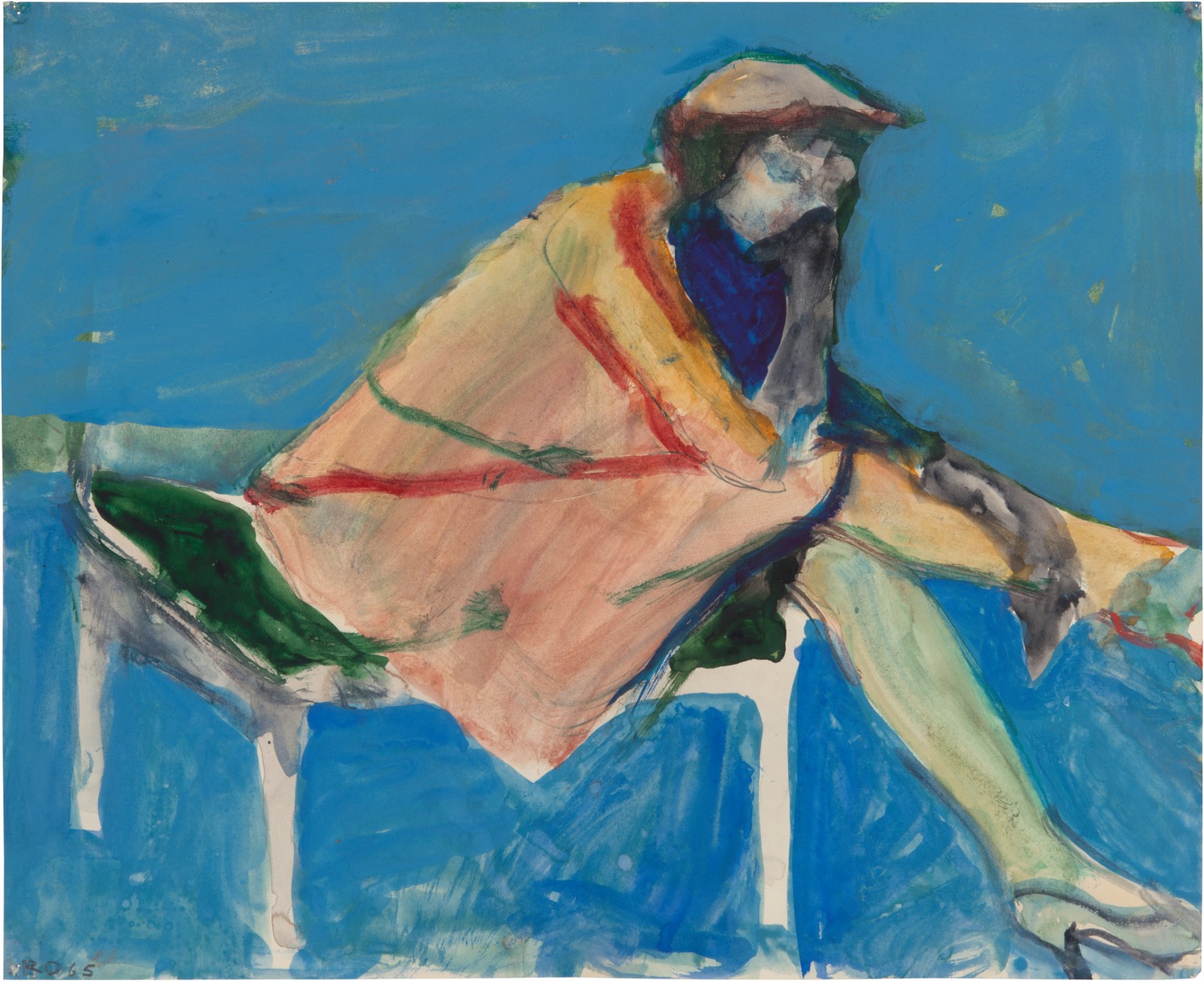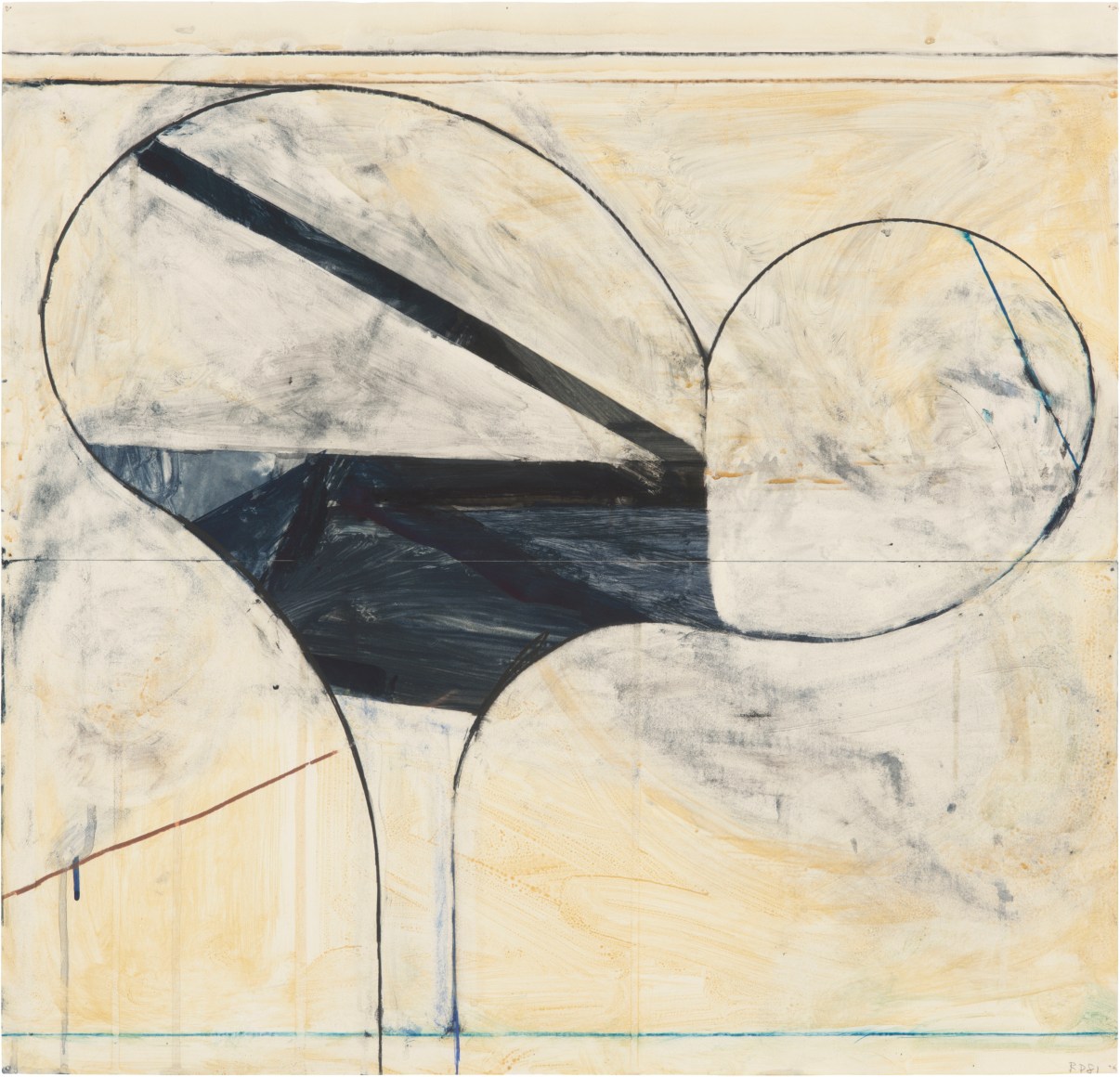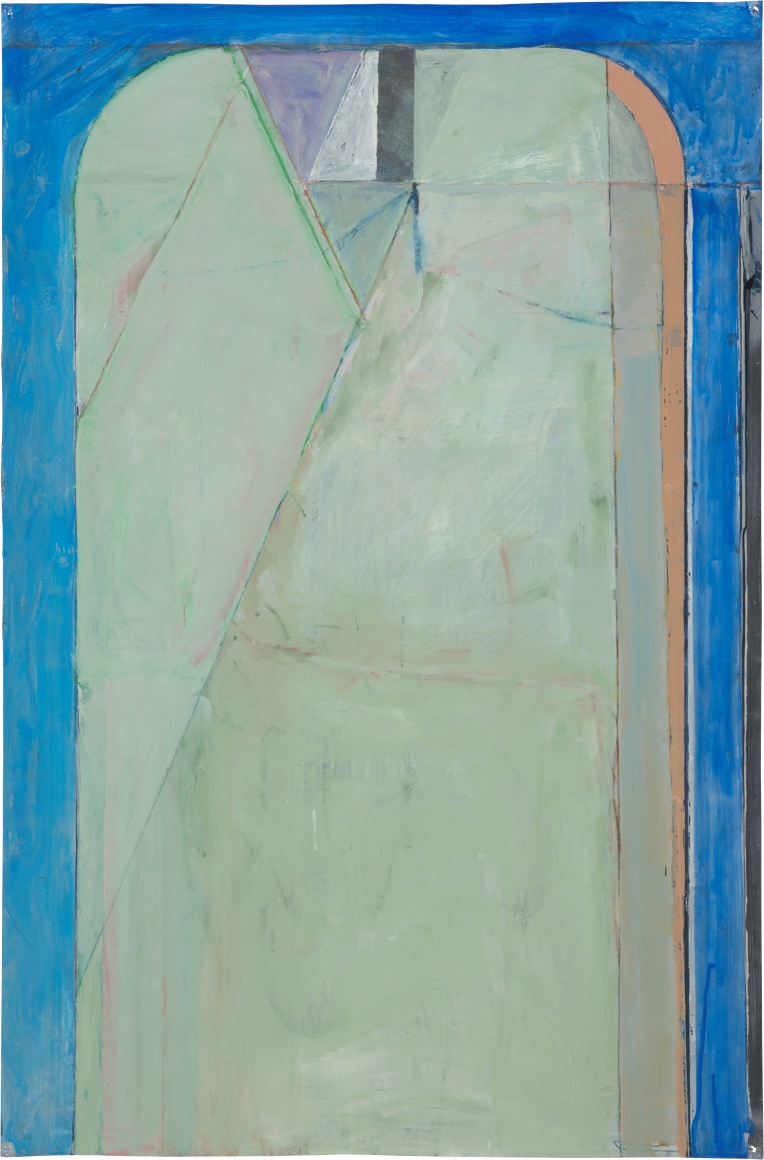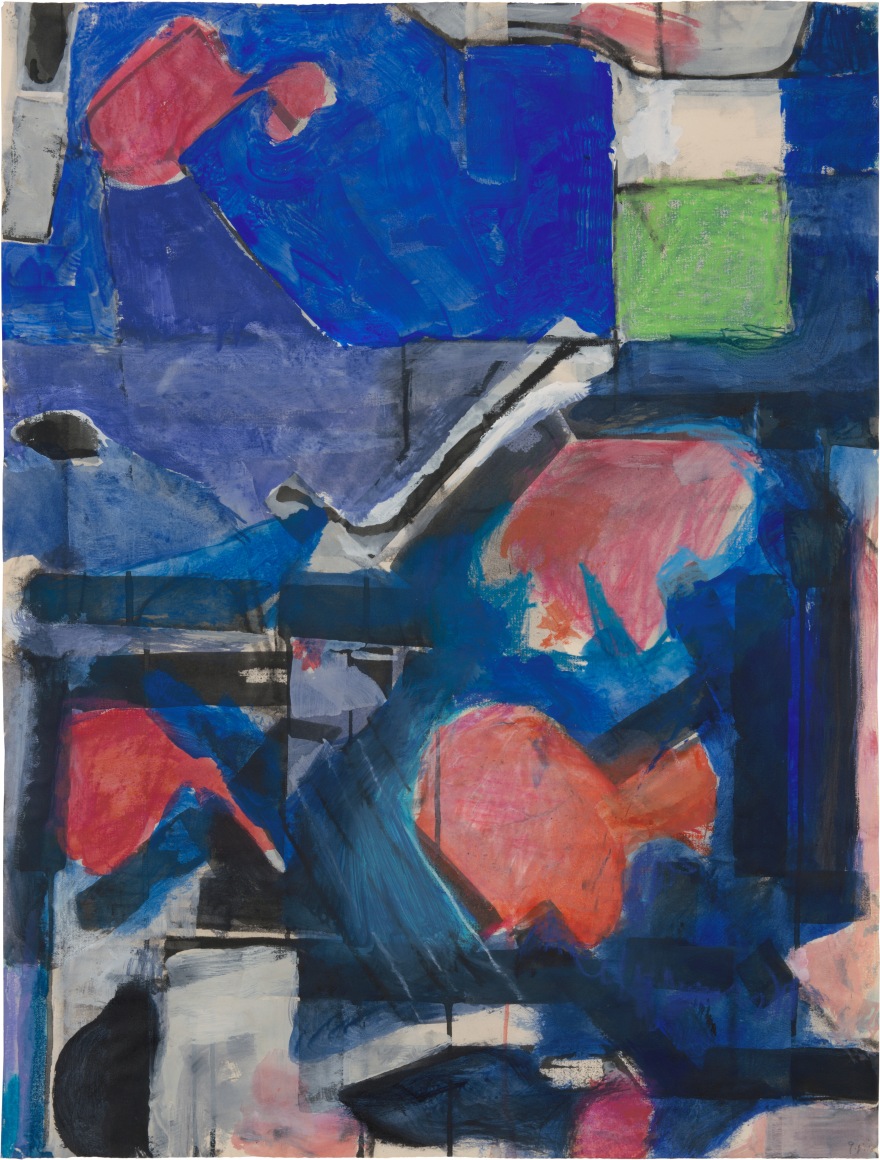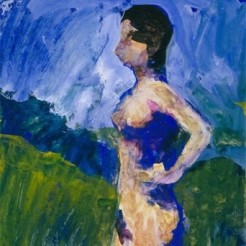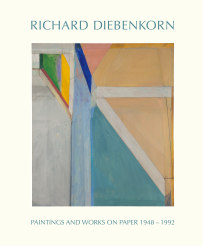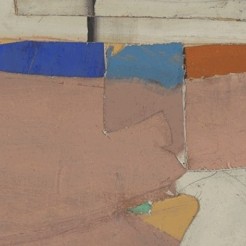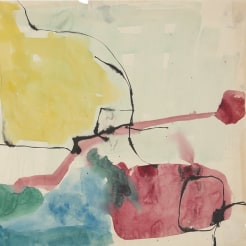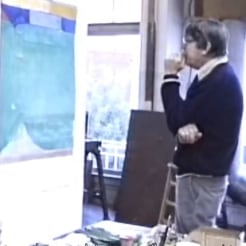Berggruen Gallery is proud to present Richard Diebenkorn: Paintings and Works on Paper, 1948-1992, a historical exhibition of work made by the artist over six decades. This is the gallery’s ninth solo exhibition of Diebenkorn’s work since his first show at Berggruen in 1975. The exhibition will be on view February 18 through April 30, 2021. Enter the Online Viewing Room for this exhibition here.
Spanning the full range of the artist’s career, Richard Diebenkorn: Paintings and Works on Paper, 1948-1992 follows the unique aesthetic periods that make his oeuvre so profound. The exhibition includes his Albuquerque and Berkeley abstractions of the 1940s and 1950s, representational figurative, still life, and landscape renderings of the 1950s and 1960s, the great Ocean Park cycle, and a selection of works from his Healdsburg period of the 1980s and early 1990s. The artist's works on paper are also on view, including monochromatic ink on paper figurative studies from the 1950s and 1960s, Clubs and Spades series from the 1980s, and highlights of his large-scale color intaglio prints. The breadth of work on display demonstrates Diebenkorn’s contribution to various art movements, from Abstract Expressionism to the Bay Area Figurative School that the artist himself helped found.
The three-story survey features over fifty paintings, works on paper, and limited-edition prints—including rarely exhibited works from private collections. Deemed “one of the most compelling and masterful bodies of work in American art,” the Ocean Park period is central to the exhibition (Price 2011). Structured yet lyrical, Ocean Park #23 boasts dissecting planes of aqua, ochre, and viridian. The 1969 canvas is exemplary of the kind of work Diebenkorn was making in Santa Monica at that time: “In paintings made between 1968 and 1970, there are wholly satisfying examples of wide white bands articulating planes and panels of jewel-toned colors…evocative of the transcendency and radiance of stained-glass windows” (Bancroft 2011). While Diebenkorn is renowned for his Ocean Park masterpieces, he is also a father to the exceptionally intriguing Bay Area Figurative movement. Art historian and curator Jane Livingston notes that the “creator of the famously grand, opulent and luminous Ocean Park paintings [also] turns out to be one of the twentieth century’s most accomplished masters of modernist figuration, and of the intimate world of still life, and of ordinary domestic existence” (Livingston 2003). In a time when Abstract Expressionism had charge of the art world, Diebenkorn embraced a thematic shift—returning to the possibilities of representation. This gave way to a distinct figurative period, encompassing some of Diebenkorn’s most deliberate and emotive works. Yet no matter his chosen subject or stylistic approach, the artist always created strong compositions marked by vivid, gestural planes.
Late in his career, Diebenkorn wrote a studio note with ten guiding principles on beginning a painting. The first point began, “attempt what is not certain.” Featuring works from every period and in every medium of his practice, Richard Diebenkorn: Paintings and Works on Paper, 1948-1992 illuminates how the artist accomplished this endeavor. A careful amalgam of abstract and figurative works, the exhibition evinces the range and depth of Diebenkorn’s entire artistic output. Diebenkorn produced such a compelling body of work throughout his lifetime that his influence continues to inspire and affect artists today.
This exhibition is the result of a special and long-lived relationship between Richard Diebenkorn, Gretchen and John Berggruen, and Berggruen Gallery. John Berggruen first showed the artist’s work in 1975, just a few years after opening his gallery in downtown San Francisco. Decades passed, major exhibitions were executed, and a strong friendship formed. In a 2015 interview, John said, “there’s no question, I felt great admiration toward Diebenkorn…he was like a mentor figure, and was always encouraging me, always sympathetic to what I was doing.” It is a great honor to present this significant selection of work by Richard Diebenkorn, an artist who inspired the lives of Gretchen and John Berggruen together.
Richard Diebenkorn was born in Portland, Oregon in 1922. His family relocated to San Francisco, California two years later. Diebenkorn initiated his studio art and art history studies at Stanford University in 1940. There, the young artist studied under Victor Arnautoff and Daniel Mendelowitz. Diebenkorn went on to serve in the U.S. Marine Corps from 1943–1945. He produced myriad representational sketches during these years, what is now known as his “wartime” work. After his service, Diebenkorn returned to San Francisco and took advantage of the G.I. bill to study at the California School of Fine Arts. He was introduced to inspiring contemporaries, who would ultimately become friends, colleagues, and major artistic influences—namely, David Park. After painting for six months in Woodstock, New York via the Albert Bender Grant-in-Aid fellowship, Diebenkorn once again returned to the Bay Area, settling in Sausalito with his wife, Phyllis Gilman. In 1947, the artist became a faculty member at the California School of Fine Arts. Fellow instructors included Clyfford Still, Elmer Bischoff, Hassel Smith, Edward Corbett and David Park. Diebenkorn's first solo exhibition was held at the California Palace of the Legion of Honor in 1948, a remarkable achievement for a young painter. In 1950 Diebenkorn enrolled at the University of New Mexico, Albuquerque. He and his family remained in Albuquerque for two and a half years as the artist presented a cycle of paintings for his master’s degree exhibition now known as the “Albuquerque period.” Diebenkorn eventually moved to Berkeley in 1955, where he continued painting in a highly abstracted style until he commenced upon a new, representational mode in which he rendered landscapes, figure studies, and still lifes. He is now celebrated as an important part of the Bay Area Figurative movement. In 1966, Diebenkorn accepted a teaching position at UCLA and thus moved to Santa Monica. Within several months of beginning work in his first Southern California studio, located in a neighborhood near the beach known as Ocean Park, the artist began the now venerable Ocean Park series. In doing so, he definitively ended his figurative approach and invented a unique, abstract language he would develop until 1988. That spring, he and Phyllis moved back north to Healdsburg, California where the artist created beautiful, smaller-scale works until his declining health prompted the couple to spend more time in Berkeley. Richard Diebenkorn died in Berkeley on March 30, 1993.
Diebenkorn’s work is represented in significant museum collections in the United States and across the world, including the Los Angeles County Museum of Art, Metropolitan Museum of Art in New York, Museum of Fine Arts in Boston, Museum of Modern Art in New York, National Gallery of Art in Washington, D.C., San Francisco Museum of Modern Art, and the Whitney Museum of American Art in New York. Richard Diebenkorn represented the United States in the 34th and 38th Venice Biennale. He was the recipient of numerous honors and awards, including the 1991 National Medal of Arts. Today, he is considered one of the most influential 20th-century American painters.
Richard Diebenkorn: Paintings and Works on Paper, 1948-1992, February 18 – April 30, 2021. On view at 10 Hawthorne Street, San Francisco, CA 94105. Images and preview are available upon request. For all inquiries, please contact the gallery by phone (415) 781-4629 or by email info@berggruen.com.
Price, Marla and Szakacs, Dennis, Richard Diebenkorn: The Ocean Park Series (Newport Beach, California, the Orange County Museum of Art, 2011): 6.
Bancroft, Sarah, Richard Diebenkorn: The Ocean Park Series (Newport Beach, California, the Orange County Museum of Art, 2011): 19.
Livingston, Jane, Richard Diebenkorn: Figurative Works on Paper (San Francisco, California, Berggruen Gallery, 2003): 13.

